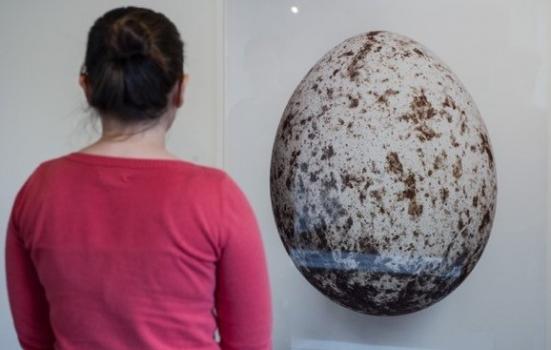What is it about great art that makes one’s hair stand on end? Claire Gulliver describes a contemporary art programme that tried to figure it out.

Jane Hobson
“The first line, perhaps even the first word, makes the hairs on the back of your neck stand up.” That’s what Booker Prize winning novelist Ben Okri once said, when asked about great writing.
It’s a wonderful description of the magic of great art: that point where an artist’s vision, endeavour and execution meet relevance and meaning, striking deep and surprising connections with people and the world around.
As arts professionals, we’re loath to break this magic down into things that can be measured
As arts professionals, we’re loath to break this magic down into things that can be measured. And yet in our resistance to measuring quality we make it difficult for ourselves: difficult to articulate quality and therefore difficult to strive for the art that we make, or enable others to make, to be the best that it can be.
Making great art is, after all, not a process of creation alone. It’s also a process of questioning, of asking what can be done and to what effect, a dialogue between creating and dispassionately criticising. Artists, authors, composers all ask these questions, so why shouldn’t we?
Structured new work
The New Expressions programme, led and managed by Plymouth City Council, establishes a structured approach to collaboration between contemporary artists and museums, an approach specifically designed to raise the quality of work in this field.
In its third iteration, 15 museums across three English regions partnered with 20 lead artists to create new work over a two-year period. The idea of structuring projects simultaneously is to create a shared forum in which to explore and extend possibility, inspiring critical awareness and creative risk-taking.
But how could we tell whether this structured approach was indeed nurturing quality? First, we had to describe what we meant by ‘quality’.
We wanted to see work that was adventurous and challenging and that provoked a response. We wanted to see work that enhanced its context. We wanted artists to push the boundaries of practice and to pursue work with the rigour needed to follow through an artistic enquiry or realise a core idea.
Categories of quality
We broke these down into generic (or intrinsic) quality and contextual quality. Generic, or intrinsic, aspects of quality are integral to all types of great art and culture, from drama to visual art. These acknowledge the capacity of art to make one’s hair stand on end. Among these, we described the following:
- Adventure: the extent to which art deals with something unusual or unexplored.
- Challenge: the extent to which art stretches the mind beyond day-to-day thoughts.
- Activity or agency: the extent to which art prompts thoughts or feelings.
- Transformation: the extent to which art changes ways of thinking and feeling.
Contextual quality, on the other hand, considers attributes of an artwork that are unique to its particular context. Here, we wanted to understand the degree to which the artwork stimulated rethinking a historic collection or space (contextual stimulus), and the extent to which it opened up that collection or space in a surprising way (contextual distinctiveness).
Asking questions
We were then able to develop a logic model to frame our investigations. We drafted key questions that we would need to ask in order to discuss quality objectively. For example, in order to better understand how adventurous an artwork was, we asked how far it dealt with something unusual and unexplored.
By combining artists’ and museums’ self-assessment (through surveys and interviews) with audience feedback, we built a rich and multi-dimensional assessment of artistic quality.
We asked artists whether they had pursued similar lines of creative or critical enquiry before, and what made their line of enquiry new. These questions teased out ways in which artists were building on their existing practice and taking core interests in new directions.
At the start of ‘New Expressions 3’, 82% of artists had pursued similar lines of creative or critical enquiry before. Some had worked with the same media or materials, while others referred to ideas, themes and approaches to practice.
At the end of the programme we discussed with artists the extent to which their commissions had indeed pushed their practice in the ways that were envisaged, or in new ways that they had not anticipated, resulting in new understanding. Eight out of nine artists said their project had stretched them creatively, and seven out of nine said that it had stretched them critically.
Among audiences, 64% made a link between the artists’ work and the historic collection (contextual stimulus). Of those, 77% agreed that the artists’ work opened up the collection or building in a surprising way (contextual distinctiveness).
60% of audience respondents agreed that the artists’ work stretched their mind beyond day-to-day thoughts (challenge), while 52% said the encounter had prompted new, external connections and ideas (activity/agency).
A final question, asking visitors to indicate the subjects that the artwork had triggered thoughts or feelings about, suggested that visitors found it easier to connect the artwork to its historical and geographical context (contextual quality) than to find personal meaning and relevance (generic or intrinsic quality).
Passion and dispassion
Ultimately, quality is about thoughts and feelings as well as facts. Passion and dispassion. But to keep moving the discussion (and art) forward, it’s worth trying to understand what it is about great art that makes one’s hair stand on end and whether that hair belongs to the audience or the artist.
Claire Gulliver is an independent arts consultant providing project management, evaluation and writing services. She was Programme Evaluator for New Expressions 3 and writes here in a personal capacity.
www.clairegulliver.co.uk
www.newexpressions.org




